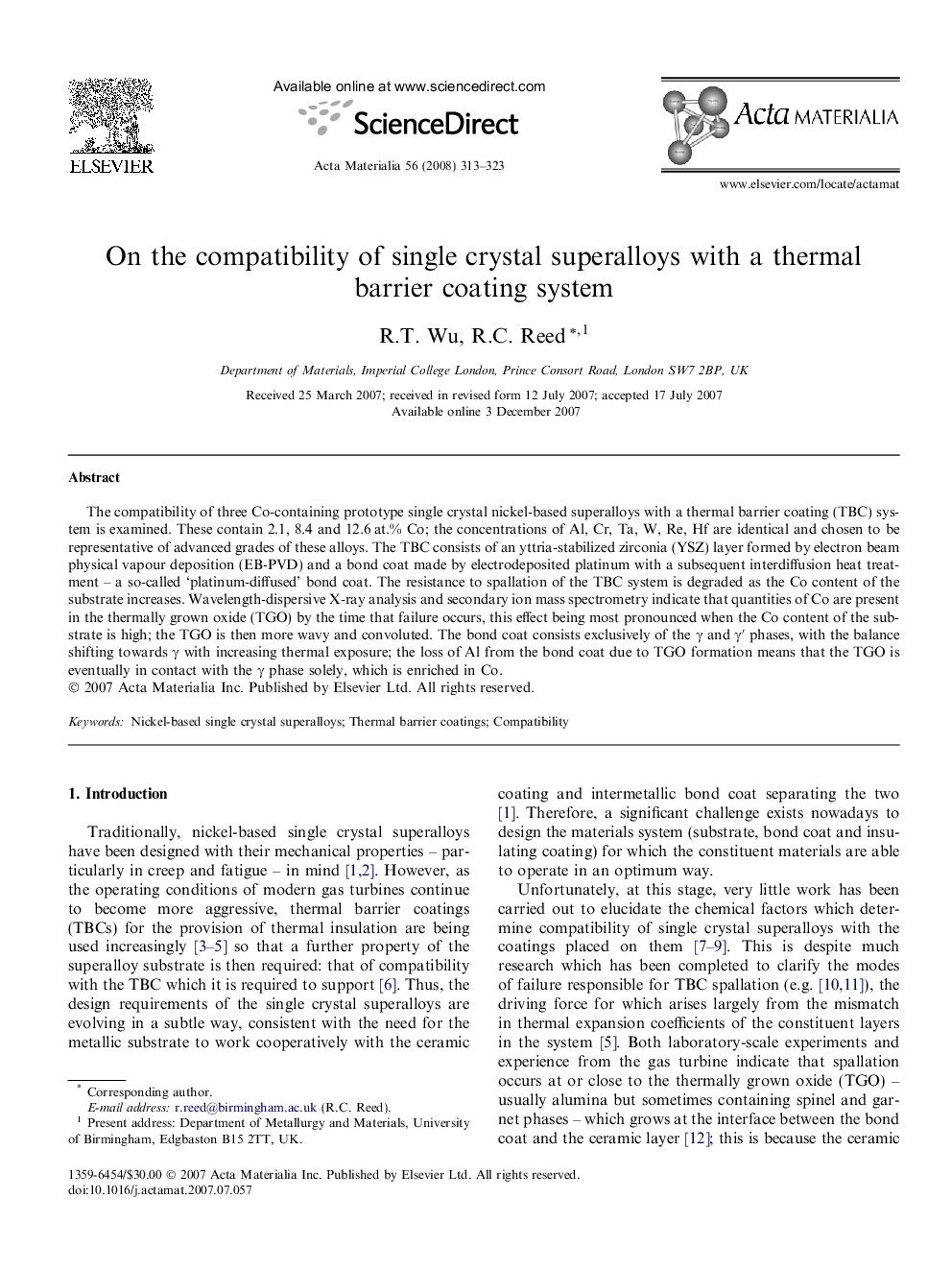| Article ID | Journal | Published Year | Pages | File Type |
|---|---|---|---|---|
| 1449335 | Acta Materialia | 2008 | 11 Pages |
The compatibility of three Co-containing prototype single crystal nickel-based superalloys with a thermal barrier coating (TBC) system is examined. These contain 2.1, 8.4 and 12.6 at.% Co; the concentrations of Al, Cr, Ta, W, Re, Hf are identical and chosen to be representative of advanced grades of these alloys. The TBC consists of an yttria-stabilized zirconia (YSZ) layer formed by electron beam physical vapour deposition (EB-PVD) and a bond coat made by electrodeposited platinum with a subsequent interdiffusion heat treatment – a so-called ‘platinum-diffused’ bond coat. The resistance to spallation of the TBC system is degraded as the Co content of the substrate increases. Wavelength-dispersive X-ray analysis and secondary ion mass spectrometry indicate that quantities of Co are present in the thermally grown oxide (TGO) by the time that failure occurs, this effect being most pronounced when the Co content of the substrate is high; the TGO is then more wavy and convoluted. The bond coat consists exclusively of the γ and γ′ phases, with the balance shifting towards γ with increasing thermal exposure; the loss of Al from the bond coat due to TGO formation means that the TGO is eventually in contact with the γ phase solely, which is enriched in Co.
